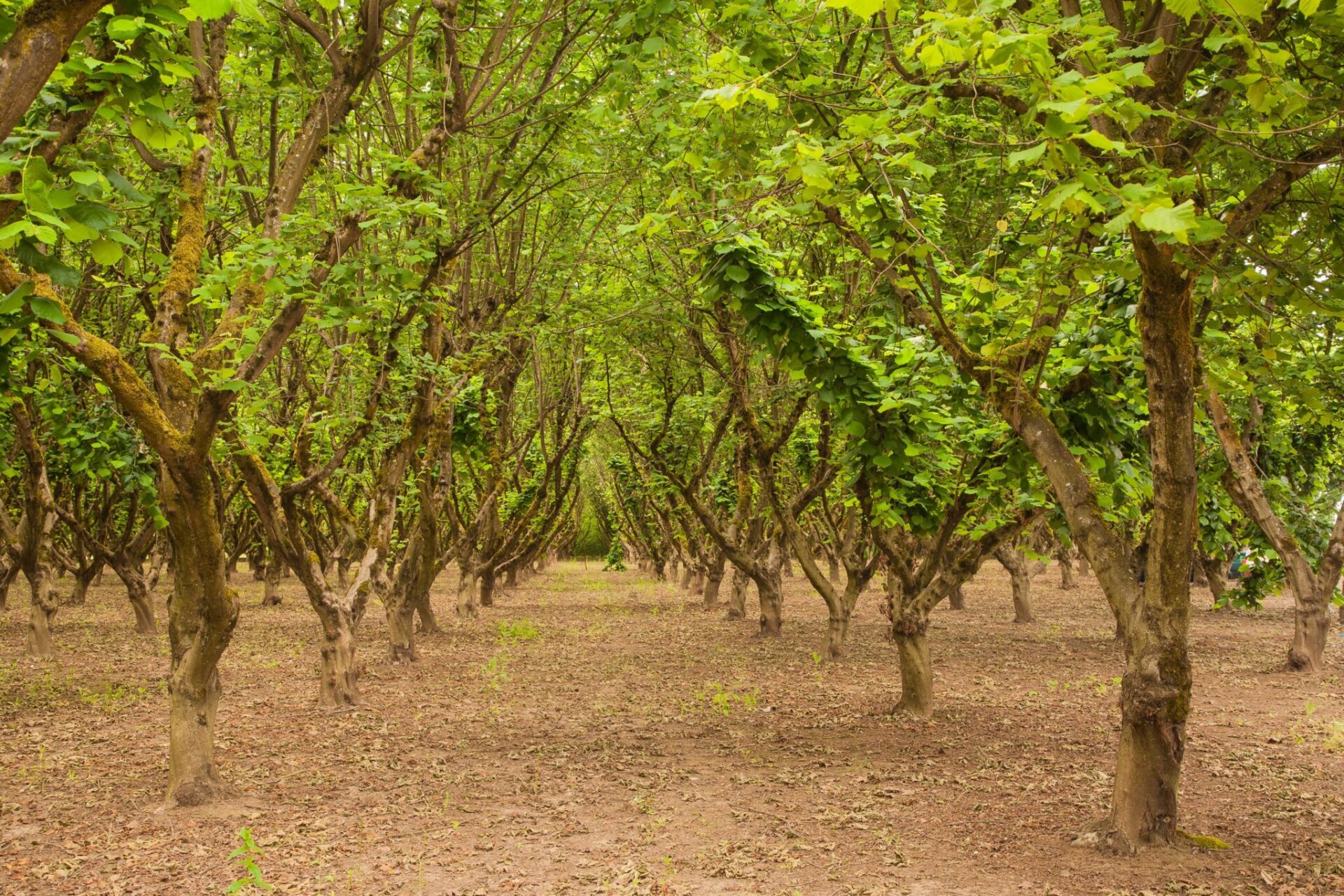
It all begins with spacing. While the temptation exists to maximize the land and plant as many trees as possible, several factors need to be considered before a tree ever hits the soil. Proper spacing should address the room around the orchard, between rows in the orchard, between trees within each row and accommodate the various equipment that will be going in and out of the trees.
For the boundaries, growers need to allow at least 25 feet on the edges of the orchard to allow adequate space for equipment to make turns. For the bookends of the orchard, up to 30 feet may be necessary if totes will be stacked or semis need room to maneuver. This same rule of thumb should be applied to the space between orchards and roadways or waterways.
The spacing within the rows is also critical. There are several variations, but the most common spacing is 20×20: 20 feet between each tree in a row and 20 feet between each row within the orchard. This spacing is optimum for tree growth as it allows plenty of room for each tree to spread and capture adequate sunlight without getting crowded by its neighbors. This spacing is also efficient for harvesting equipment; sweepers, harvesters and tractors can easily pass-through alleys of this size. The standard 20×20 spacing allows for 108 trees per acre.
While 20×20 is the most popular, it is not the only option. Much of this variance is contingent upon the varieties being planted. Older trees, such as Barcelona and Ennis, were often planted at 24×24 spacings. However, newer varieties tend to be smaller and don’t require as much space to sprawl. Some varieties, such as Yamhill, have even thrived at 18×18 placings. Spacings as tight as 18×12 have popped up in Oregon, but this could lead to crowding. These narrower spacings are more appealing to growers with lower quality soil due to the lesser soil yielding smaller trees.
No matter the other factors, the impact of double-density planting should also be considered; this planting method for the first decade of the trees’ lives will tighten up the spacing to 20×10 until the alternating trees are removed. Even after removal, the remaining trees could develop or be shaped differently due to the compact spacing in their formative years.

Square vs Diamond
The greatest debate among hazelnut farmers and nurserymen when planting orchards is the diamond pattern versus the square. An oversimplified view claims that a diamond is just a square turned slightly, but it goes far beyond that when tree planting begins. It comes down to geometry and simplicity.
For the pro-diamond advocates, the pattern can accommodate more trees per acre, thus making it attractive for higher yields. Diamond patterns also tend to allow more sunlight into the orchard. However, diamonds have harder angles and diagonals to work with, leading to confusion and some trees getting missed during maintenance passes throughout the year.
Supporters of square-patterned orchards tout the consistent spacings of each row and simplicity of getting in and out of the orchard. Squares also provide more surface area for each individual tree. Anyone looking to plant a new orchard should consult with several nurseries to determine which pattern is best for their goals and plot of land.
Everything else follows the layout design. Once that is determined, the other parameters can fall into place. Pollinizer placement is also critical. Nurserymen recommend planting 8% of the new orchard as pollinizers. A common arrangement is every third row with every third tree being a pollinizer. This allows each acre to be sufficiently coated in pollinizers each winter.
Planting Time
The best time to plant hazelnut trees in the Pacific Northwest is November or December. Prior to this, growers need to make sure their ground is properly prepped. This includes leveling the soil, addressing any potential drainage issues and amending the soil as necessary to achieve the proper pH balance.
When the time comes to put trees in the ground, modern technology has replaced many of the classic tools. Laser levels and GPS grid planting have largely taken the place of stakes and trees. A GPS scribe can be attached to the back of a truck that drives through the field and pinpoints exactly where each tree should be planted. A planting crew then follows this map and plants each individual tree using either a shovel or auger. These crews can plant thousands of trees and complete an entire multi-acre orchard in one day! Hazelnut trees should be planted 10” to 12” deep in a hole 18” to 24” wide.
During the planting preparation process, a best practice is to mark the pollinizer spaces first. These trees are permanent and wouldn’t be removed if trees were planted in double density; one out of every 12 permanent trees will end up being a pollinizer. Account for these crucial trees first and then build the orchard from there.











